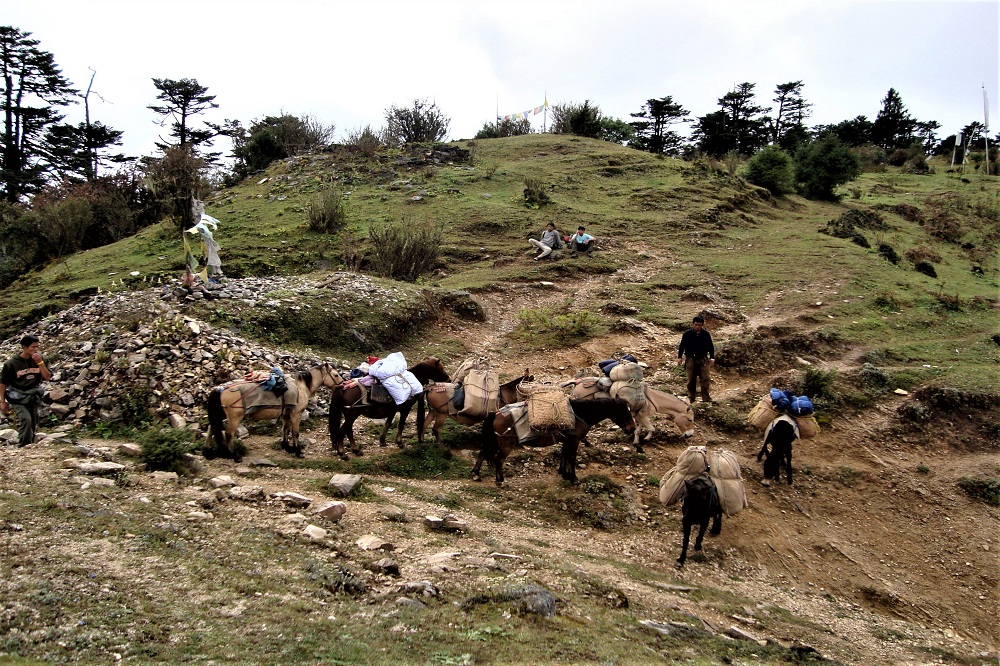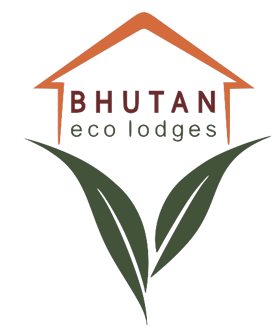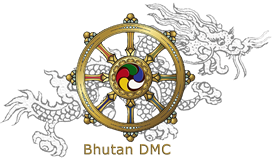Bhutan – Druk Path Trek
The most popular trekking route in Bhutan with a view of natural landscape of blue pine forests, ridges, pristine lakes and villages amidst backdrop of the Himalayas
Duration: 5 nights 6 days camping trek & 5 nights 6 days cultural tour with hotel stay
Recommended Seasons: The recommended months for this trek are March to June and September to November
Trek Grade: Moderately demanding
This is a short six-day scenic trek with great views, which leads from Paro to Thimphu or vice versa, crossing the chain of mountains that separates the two valleys. This happens to be one of the most popular treks in the country passing through gorgeous landscape of blue pine forests, high ridges and pristine lakes. The route is sparsely inhabited by nomadic yak herders. Also, there are wonderful lakes en route teeming with fish and the area is famous for its spectacular rhododendron forests, which bloom in April & May. In the clear weather of late autumn and winter there are great views of the Himalayas and trekkers can even enjoy stunning views of Mount. Gangkar Puensum, the highest unscaled peak in the world.
Itinerary for Druk Path Trek
Day 1: Arrive Paro by Flight
The flight to Paro is one of the most spectacular in entire Himalayas. Whether flying along the Himalayan range from Kathmandu or over the foothills from Kolkatta, the journey offers magnificent views and an exciting descent into the Kingdom. Bhutan’s first gift, one disembarks from the aircraft is the cool, clean and rejuvenating mountain air. After immigration formalities and baggage collection, warmly received by our representative and afterwards transfer to the hotel.
The beautiful valley of Paro encapsulates within itself a rich culture, scenic beauty and hundreds of myths and legends. It is home to many of Bhutan's oldest temples and monasteries, National Museum and the country's only airport. Mount. Chomolhari (7,314m) reigns in white glory at the northern end of the valley and its glacial water plunge through deep gorges to form Pa Chhu (Paro River). Paro is also one of the most fertile valleys in the Kingdom producing a bulk of the locally famous red rice from its terraced fields.
Afternoon visit Rinpung Dzong, which has a long and fascinating history. Built in 1646 by Zhabdrung Ngawang Namgyal, the first spiritual and temporal ruler of Bhutan, the Dzong houses the monastic body of Paro, the office of the Dzongda (district administrative head) and Thrimpon (judge) of Paro district. The approach or exit to the Dzong is also through a traditional covered bridge called Nemi Zam. A walk through the bridge, over a stone inlaid path, offers a good view of the architectural wonder of the Dzong as well as life around it. Rinpung Dzong is also the venue of Paro Tshechu, held once a year in the spring.
Evening an exploratory walk around Paro main street, visiting local shops lined on both sides of the road.
Overnight at the hotel in Paro (Altitude 2,280m)
Day 2: Paro
After breakfast, drive to the base of Drukgyel Dzong, which is currently under restoration. On a clear day, there is fascinating view of Mount. Chomolhari (7314m) from the village below this ruined fortress.
Later take a short drive to Satsam Chorten (trail head point) for a walking excursion to Tiger’s Nest (Taktsang Lhakhang) (approx. 5-hour round trip walk). This most famous of Bhutan’s monasteries is perched on the side of a cliff 900m above the Paro valley floor. It is said that Guru Rinpoche arrived here on the back of a tigress, and meditated at this place, hence the monastery is also called ‘Tiger’s Nest’. This site, which has long been recognized as a most sacred place, was visited by Shabdrung Ngawang Namgyal in 1646, the religious and temporal ruler of Bhutan. It is a place of pilgrimage which Bhutanese try to visit at least once in a lifetime. In April 1998 a fire had severely damaged the main structure of the building but now it has been fully restored to its original grandeur.
Later visit Kyichu Lhakhang, one of the oldest monasteries of the Kingdom associated with the introduction of Buddhism in Bhutan.
Overnight at the hotel in Paro (Altitude 2,280m)
Day 3: Paro – Jili Dzong, Distance: 8km, approx. 4-hour walk, Ascent: 1,090m, Camp Altitude: 3,480m
Morning after breakfast, visit Ta Dzong, the National Museum, holding fascinating collection of art, relics, religious thangkha paintings, handicrafts, masks, costumes, armour and Bhutan’s exquisite postage stamps. The visit will provide an insight into the rich and unique cultural heritage and tradition of Bhutan.
Then begins the trek from Ta Dzong. Though today’s a short trek distance but arduous as one need to climb more than 1,000m elevation. The trek follows a gravel road past a few farms for about 30 minutes and then climbs up a steep ridge before leading through blue pine and fir forests to Damche Gom. If the weather is clear Paro valley can be seen with snow-capped mountains behind. Once one reaches the ridge below Jili Dzong, descend about 100m to the campsite below the Dzong.
Overnight camp at Jili Dzong (Altitude 3,480m)
Day 4: Jili Dzong - Jangchulakha, Distance: 10km, approx. 4-hour walk, Ascent: 310m, Descent: 50m, Camp Altitude: 3,770m
The day begins with an hour and a half hour climb and then later the ascent is more gradual. The trail takes you through thick alpine forests and rhododendrons. You can have fine views of Mount. Jhomolhari and other snow-capped peaks if the weather is clear and may hear some monal pheasants calling during the day. You may see yak herders around your campsite.
Overnight camp at Janchulakha (Altitude 3,770m)
Day 5: Jangchulakha – Jimilang Tsho, Distance: 11km, approx. 4-hour walk, Ascent: 330m, Camp Altitude: 3,870m
The trail follows the ridge, and on a clear day the views of the mountains and valley are sensational. One will enjoy a great view of Jichu Drake (6,989m), the peak representing the protective deity of Paro. The camp is close to the Jimilang Tsho lake, which is famous for its giant-sized trout.
Overnight camp at Jimilang Tsho (Altitude 3,870m).
Day 5: Jimilang Tsho - Simkota, Distance: 11km, approx. 4-hour walk, Ascent: 820m, Camp Altitude: 4,110m
The trail takes you through dwarf rhododendron trees and passes by the lake of Janetsho. Today you may come across some yak herders’ camps and get an idea of how these people live. Overnight camp close to Simkota Lake, and if you are lucky, you can catch a lake trout for the dinner.
Overnight camp at Simkota (Altitude 4,110m).
Day 6: Simkota - Phajoding, Distance: 10km, approx. 4-hour walk, Ascent: 130m, Camp Altitude: 3,750m
Today begins with a gradual climb, and if the weather permits you will enjoy majestic views of Mt. Gangkar Puensum, the highest mountain in Bhutan and a host of other peaks. The trail slowly descends through juniper trees to a campsite at Phajoding.
Overnight camp at Phajoding (Altitude 3,750m).
Day 7: Phajoding – Motithang - Thimphu, Distance: 5km, approx. 3-hour walk, Descent: 1,130m
After visiting Phajoding monastery built in 15th century by Shagcha Rinchen who introduced Drukpa Kagyu School in Bhutan in the 13th century, trek downhill to Thimphu passing through a forested area of mostly blue pine. Taking a leisurely pace, you reach Thimphu in about 3 hours.
On arrival, in Thimphu check-into the hotel. The capital town of Bhutan and the centre of government, religion and commerce, Thimphu is a unique city with unusual mixture of modern development alongside ancient traditions. With the population of about 1,00,000 it is perhaps still the world’s only capital city without a traffic light.
Later in afternoon walk around National Memorial Chorten, a large white structure crowned with a golden spire. It is located close to the center of Thimphu city and is one of its most iconic monuments. This is the most ideal spot to interact with locals who throng in large numbers to circumambulate the chorten, whirl the large red prayer wheels and pray at a small shrine inside the gate. The paintings and statues inside the monument provide a deep insight into Buddhist philosophy.
Afterwards take a stroll around Thimphu main street and market area.
Overnight at the hotel in Thimphu (Altitude 2,320m).
Day 8: Thimphu
Morning after breakfast, drive to see the iconic gigantic Buddha Dordenma (Vajra seated), the world’s largest sitting bronze statue. Majestically situated at Kuenselphodrang, it is an object of great veneration to all sentient beings. The land at Kuenselphodrang measuring 145 acres was gifted to Monks Body by His Majesty the Fourth King of Bhutan. The Park conserves 798.4 acres of forest area that surrounds the Buddha Dordenma statue. Dedicating it to the 60th birth anniversary celebration of His Majesty the Fourth Druk Gyalpo, His Holiness the Je Khenpo consecrated the 201 feet tall Buddha Dordenma statue at the Kuenselphodrang on 24th September 2015.
After this insightful visit drive to Textile Museum, established in 2001 under the royal patronage of Her Majesty Gyalyum Sangay Choden Wangchuck. The museum is managed by the Department of Culture, Ministry of Home & Cultural Affairs, Royal Government of Bhutan. Exhibitions here introduce the major weaving techniques, styles of local dress and textiles made by women and men.
Institute for Zorig Chusum, commonly known as Arts & Crafts School or Painting School is an important learning center that offers a six-year course on the 13 traditional arts and crafts of Bhutan. On a visit, one can see students learning the various skills taught at the school.
Located below the main town, Centenary Farmers Market popularly known as Weekend market is a pleasant, colourful & delightful place to mingle with locals. Farmers come from all over the country to sell their farm products in this market. Also available here are the handicrafts and artifacts, to purchase.
Then visit Changangkha Lhakhang, one of the ancient temples in Thimphu established on a site chosen by Phajo Drukgom Shigpo, the founder of Drukpa lineage in Bhutan. The central statue here is Chenrezig in a manifestation with 11 heads. From temple courtyard, there is fascinating view of Thimphu valley.
Conclude the sightseeing of the day with visit of Trashichhoedzong that has been the seat of the government since 1952 and presently houses the throne room and offices of His Majesty the King, the Secretariat and the Ministries of Home affairs and Finance. The dzong is located close to Thimphu town, next to the banks of the Wang Chhu River. It is an impressively large structure, surrounded by well-kept lawns and beautiful gardens.
Evening free to explore the government-run Handicrafts Emporium and local crafts Bazaar, to browse through example of Bhutan's fine traditional arts constituting hand-woven textiles, thangkha paintings, masks, ceramics, slate and wood carvings, jewellery, interesting items made from local materials.
Overnight at the hotel in Thimphu. (Altitude 2,320m).
Day 9: Thimphu – Dochu La - Punakha (75km, approx. 3-hour drive)
After breakfast drive to Punakha across Dochu-la pass (3,088m/ 10,130 ft) stopping here to take in the view and admire the chorten, mani wall, and prayer flags which decorate the highest point on the road. If skies are clear, the following peaks can be seen from this pass (left to right): Masagang (7,158m), Tsendagang (6,960m), Terigang (7,060m), Jejegangphugang (7,158 m), Kangphugang (7,170 m), Zongphugang (7, 060 m), a table mountain that dominates the isolated region of Lunana - finally Gangkar puensum, the highest peak in Bhutan at 7,570m.
Afternoon visit Punakha Dzong. Also known as ‘The Palace of Great Bliss’, Punakha Dzong was built strategically at the junction of Pho Chhu and Mo Chhu rivers in 1637 by Zhabdrung Ngawang Namgyal to serve as the religious and administrative centre of the region. The Dzong has played an important role in Bhutan’s history and on 17 December 1907, the first King of Bhutan Gongsar Ugyen Wangchuk, was crowned here. Damaged by six catastrophic fires, an earthquake and once by flood, the Dzong has been fully restored by the fourth King. Dzongchung (or the little Dzong), built in 1328 by saint Ngagi Rinchen can still be seen opposite the main Dzong.
Thereafter a short walking excursion to Chimi Lhakhang:
The Chimi Lhakhang (temple), situated on a round hillock in the centre of Punakha valley near Lobesa, was built in 1499 by the 14th Drukpa hierarch, Ngawang Choegyel, after the site was blessed by the maverick saint Drukpa Kuenley who in the late 15th century used humour, songs and outrageous behaviour to dramatise his teachings and owing to this also known as ‘Divine Madman’. The Lhakhang is situated about 10 km from centre of Punakha town near Sopsokha village, from where a 20-minute walk through fields of mustards and rice, leads to a hillock that is the site of temple. Prayer flags are lined all along the road from the tiny village hamlet known as Yowakha, along a stream to the monastery. All houses in the village are decorated with paintings of phalluses on their exterior walls. The lama Kuenley had called the hillock where the monastery exists as the breast of a woman because of its round shape.
Overnight at the hotel in Punakha (Altitude 1,300m)
Day 10: Punakha – Dochua La pass - Paro (125km, approx. 4-hour drive)
After breakfast, continue another fascinating journey towards Paro, en route visiting Simtokha Dzong, one of the oldest fortresses of the country, built in 1629. Legend associated with dzong’s construction mention that the fortress was built to subdue a demon that was harassing travellers to this region. The most noteworthy artistic feature of this dzong is the series of over 300 finely worked slate carvings behind the prayer wheels in the courtyard.
Then drive onto Paro, on the way taking a photo stop at Chuzom, the confluence of Paro & Thimphu rivers.
Traversing onward, visit Tamchog Lhakhang, a temple dedicated to 13th century saint Thangthong Gyalpo, who is famously known as iron bridge builder in Bhutan. The temple is located across the river and in order to reach the temple one need to cross an iron bridge, one of the few remaining of the many that Thangthong Gyalpo built. Crossing the traditional iron bridge with its swaying and undulating movements is quite an experience.
Evening for shopping or at leisure in Paro city centre.
Overnight at the hotel in Paro (Altitude 2,280m).
Day 11: Depart Paro
After breakfast, transfer to the airport for flight to onward destination. Our representative will help you with exit formalities and bid you farewell.
HOTELS IN THIMPHU
HOTELS IN PUNAKHA & WANGDUE
HOTELS IN GANGTEY
HOTELS IN TRONGSA
HOTELS IN BUMTHANG
HOTELS IN MONGAR
HOTELS IN TRASHIGANG
HOTELS IN SAMDRUP JONGKHAR
HOTELS IN PHUENTSHOLING
HOTELS IN HAA
HOTELS IN GELEPHU
HOTELS IN ZHEMGANG
RESTAURANTS IN PARO
RESTAURANTS IN THIMPHU
RESTAURANTS IN PUNAKHA
TOUR ITINERARIES
TREKKING ITINERARIES
SPECIAL INTERESTS TOURS
UNIQUE FESTIVALS & FAIRS
BLOG





